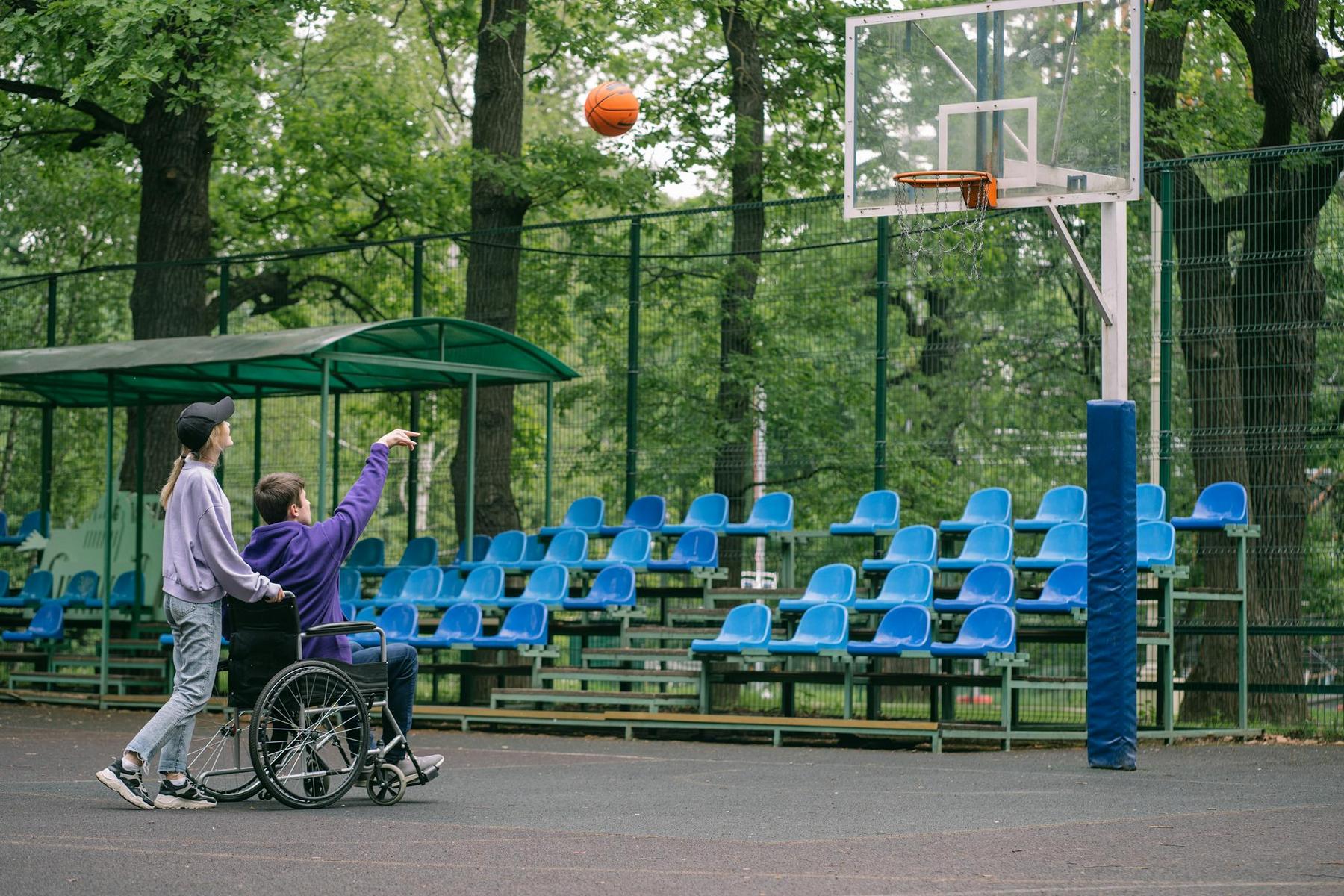When you first receive your NDIS plan, the funding categories can feel like you’re reading a foreign language. Core Supports, Capacity Building, Capital Supports—these terms are more than just administrative labels. They represent different pathways to achieving your goals, accessing the support you need, and living the life you want. For participants across Cairns and Brisbane, understanding the fundamental difference between Core Supports and Capacity Building isn’t just helpful—it’s essential for making your NDIS funding work effectively for you.
The distinction between these two categories shapes how you can spend your funding, which providers you can engage with, and ultimately, what kind of independence and growth you can achieve. Many participants discover too late that they’ve been using their funding from the wrong category, or worse, not using portions of their plan at all because they didn’t understand what was available to them. This guide will clarify these crucial funding categories, helping you navigate your NDIS plan with confidence and purpose.
What Are Core Supports in Your NDIS Plan?
Core Supports represent the day-to-day assistance that helps you live your life and participate in your community. Think of Core Supports as the foundational help that addresses your immediate, ongoing needs. This funding category is designed to be flexible, allowing you to respond to changing circumstances and prioritise what matters most to you in any given period.
Core Supports encompass four key areas:
Assistance with Daily Life
This is often the largest portion of Core Supports funding. It covers personal care assistance, household tasks, and support workers who help you with everyday activities. Whether you need help with showering, meal preparation, cleaning, or managing your home, this is where that support comes from.
Consumables
These are the everyday items you need due to your disability. Continence products, low-cost assistive technology under a certain value, and basic medical supplies fall into this category.
Assistance with Social and community participation
This funding helps you engage with your community, maintain social connections, and access activities that matter to you. It might cover support workers to accompany you to events, help with recreational activities, or assist you in pursuing hobbies and interests.
Transport
This covers your transport needs to access work, education, social activities, and community participation. It can include taxi fares, rideshare services, or a contribution towards driving lessons or vehicle modifications.
The powerful feature of Core Supports is their flexibility. If you have $30,000 in Core Supports, you’re not locked into spending specific amounts in each area. You might use more for transport one month and more for daily living support another month—the choice is yours based on your current needs.
What Is Capacity Building and How Does It Differ?
Capacity Building funding represents an investment in your future. Where Core Supports address your day-to-day needs, Capacity Building focuses on developing your skills, independence, and capabilities. This category is about growth, learning, and building a more independent life over time.
Capacity Building is structured around specific areas:
Support Coordination
This funding provides someone to help you understand and implement your NDIS plan, connect with appropriate providers, and build your capacity to coordinate your own supports over time.
Improved Living Arrangements
This covers assessments and support to help you explore different living options and develop the skills you need for greater independence in your home.
Increased Social and Community Participation
Unlike the Core Support version, this Capacity Building category focuses on building your skills and confidence to participate in community activities independently. It might include training in social skills, confidence building, or learning to use public transport.
Finding and Keeping a Job
This encompasses employment-related supports, including job coaching, workplace assessments, and skill development to help you gain and maintain employment.
Improved Relationships
This category supports therapy and skill development to help you build and maintain positive relationships with family, friends, and your community.
Improved Health and Wellbeing
This is where therapeutic supports sit—occupational therapy, physiotherapy, psychology, dietetics, and exercise physiology. These allied health services work to improve your overall wellbeing and functional capacity.
Improved Learning
This covers supports that help you engage with education and training, developing skills that enhance your learning capabilities.
Improved Life Choices
This includes support to build your decision-making skills and capacity to direct your own life, including developing self-management skills for your NDIS plan.
Unlike Core Supports, Capacity Building funding is typically allocated to specific categories with set budgets. You generally can’t move unused funds between different Capacity Building categories, making it crucial to understand what you have in each area.
How Should You Decide Between Using Core Supports or Capacity Building?
Understanding when to utilise Core Supports versus Capacity Building funding requires thinking about both your immediate needs and your long-term goals. The key question isn’t “which is better?” but rather “which serves my current purpose?”
Core Supports are ideal when:
You need ongoing, day-to-day assistance that maintains your current level of functioning and quality of life. If you require regular personal care, need help with household tasks, or want to access community activities with support, Core Supports funding is your go-to resource. The flexibility of Core Supports makes it particularly valuable for managing fluctuating needs—perhaps you need more support during winter months or during periods of increased health challenges.
Capacity Building is appropriate when:
You’re working towards developing new skills, increasing independence, or addressing specific areas for growth. If you’re engaging with therapists to improve your functional abilities, working with a support coordinator to better understand your plan, or receiving coaching to maintain employment, you’re using Capacity Building effectively. This funding category represents an investment that should yield lasting improvements in your capabilities.
The most effective NDIS plans use both categories in complementary ways. For instance, you might use Core Supports for daily personal care assistance whilst simultaneously using Capacity Building funding for occupational therapy that teaches you techniques to perform more tasks independently. Over time, as your skills develop through Capacity Building supports, you might find you need fewer hours of Core Supports assistance—a transition that represents exactly what the NDIS aims to achieve.
What Does the Funding Flexibility Really Mean for Participants in Cairns and Brisbane?
For NDIS participants across Queensland, understanding funding flexibility within each category can significantly impact how effectively you use your plan. The rules around flexibility differ between Core Supports and Capacity Building, and knowing these distinctions helps you maximise your funding’s value.
Core Supports flexibility is relatively straightforward—it’s one pooled budget that you can spend across the four Core areas as you choose. This flexibility acknowledges that life doesn’t fit into neat categories. Perhaps you spend less on transport for a few months and redirect that funding towards additional support hours. This flexibility responds to real life, where your needs naturally fluctuate.
Capacity Building flexibility is more restricted. Each category within Capacity Building typically has its own allocated budget, and you generally cannot move funds between these categories. If you have $5,000 allocated for Improved Health and Wellbeing but only $1,000 for Improved Relationships, you can’t simply redirect unused health funding to pay for additional counselling services. This structure exists because Capacity Building funding is allocated based on specific goals and assessed needs in each area.
There is one important exception: Support Coordination funding. Many participants don’t realise that support coordination actually sits within the Capacity Building category, but it’s managed separately and cannot be used for other Capacity Building supports. Your support coordinator can help you understand and navigate these funding categories, making them an invaluable resource for participants, particularly those who are new to the NDIS or managing complex needs.
For participants in Cairns and Brisbane, working with local providers who understand these funding nuances can make a substantial difference. Providers familiar with Queensland’s service landscape can help you identify appropriate supports within the correct funding categories, ensuring you’re not inadvertently using funds incorrectly or leaving portions of your plan unutilised.
Can You Move Funding Between Core Supports and Capacity Building Categories?
This question reflects one of the most common frustrations participants experience with their NDIS plans. The straightforward answer is: generally, no—you cannot move funding between Core Supports and Capacity Building categories without a plan review or reassessment.
These categories are distinct, and the NDIA allocates funding to each based on your assessed needs and goals in those specific areas. The separation isn’t arbitrary; it reflects the fundamental difference in purpose. Core Supports address your day-to-day support needs, whilst Capacity Building represents an investment in developing your independence and skills. Allowing funds to move freely between categories could undermine the balanced approach the NDIS aims to achieve.
However, circumstances change, and your initial plan might not perfectly match your evolving needs. If you find yourself in this situation, you have several options:
Request a Plan Review
If your circumstances have significantly changed, or if you believe your plan doesn’t adequately reflect your needs, you can request an unscheduled plan review. This isn’t about simply wanting to move money around—you need to demonstrate that your circumstances or needs have changed since your last planning meeting.
Wait for Your Scheduled Plan Review
All NDIS plans come with a scheduled review date, typically 12 months after your plan start date. This is your opportunity to discuss how your current plan has worked, what needs adjusting, and how funding should be allocated in your next plan. Coming prepared with evidence of how you’ve used your current funding and what gaps exist gives you the strongest position for negotiating different allocations.
Work Within Your Current Categories
Sometimes the solution isn’t moving funding but understanding how to better utilise what you have. A support coordinator can help you explore creative, compliant ways to address your needs within your existing funding structure.
How Can You Maximise Both Core Supports and Capacity Building in Your Plan?
Making the most of your NDIS funding requires strategic thinking about both immediate needs and long-term development. The most successful participants approach their NDIS plans with intention, regularly reviewing how they’re using their funding and whether it’s achieving their goals.
For Core Supports, maximisation means:
Regularly assessing whether your current support arrangements are genuinely meeting your needs or simply continuing out of habit. Perhaps you’ve been using the same number of support hours each week for years, but your needs have changed. Are you using supports efficiently? Could you achieve the same outcomes with fewer hours by combining activities or scheduling more effectively?
Consider the flexibility within Core Supports as a tool, not just a feature. If you have a specific event, goal, or period where you need additional support, you can temporarily increase support hours, knowing you can scale back in quieter periods. This responsive approach ensures your funding works for your life, not the other way around.
For Capacity Building, maximisation involves:
Setting clear, measurable goals for each Capacity Building category where you have funding. What are you trying to achieve with your occupational therapy sessions? What skills do you want to develop through support coordination? Having concrete objectives helps you track progress and ensures your Capacity Building supports are genuinely building capacity, not just providing indefinite services.
Capacity Building should, ideally, change over time. If you’ve been receiving the same therapy services with the same goals for years without progress, it’s worth questioning whether those supports are genuinely building capacity or whether they’ve become maintenance supports that might better fit in Core Supports funding.
Understanding the intended progression from Capacity Building to greater independence helps you set realistic timelines and expectations. Some capacity building is time-limited by nature—learning specific skills, developing particular capabilities—whilst other supports might be ongoing but should show measurable improvement in your functioning or independence.
Core Supports vs. Capacity Building: A Practical Comparison
To help clarify the practical differences between these funding categories, here’s a comprehensive comparison:
| Aspect | Core Supports | Capacity Building |
|---|---|---|
| Primary Purpose | Day-to-day living assistance and immediate needs | Skill development and increasing independence |
| Funding Flexibility | Highly flexible—can move between the four Core areas | Restricted—each category has separate allocations |
| Example Services | Personal care, domestic assistance, community access support, transport to activities | Occupational therapy, physiotherapy, support coordination, employment coaching |
| Time Orientation | Present-focused—addressing current needs | Future-focused—investing in long-term outcomes |
| Service Intensity | Often ongoing and regular (e.g., daily or weekly) | Typically periodic or episodic (e.g., therapy sessions) |
| Expected Outcomes | Maintaining quality of life and community participation | Measurable improvements in skills, independence, or functioning |
| Provider Types | Support workers, disability support organisations | Allied health professionals, specialist trainers, coordinators |
| Budget Management | One pooled budget across all Core areas | Separate budgets for each Capacity Building category |
This comparison illustrates why understanding these categories matters. Using funding from the wrong category—or not understanding which category to draw from—can leave you with depleted funds in areas where you need them whilst unused funding sits in categories you can’t easily access.
Making Your NDIS Plan Work Effectively Across Both Categories
The most effective use of your NDIS plan comes from viewing Core Supports and Capacity Building not as separate entities but as complementary components of your overall support structure. They work best when strategically aligned towards your broader life goals.
Consider how these categories can work together. Perhaps you use Core Supports for daily personal care assistance whilst simultaneously engaging in occupational therapy (Capacity Building) that teaches you techniques to complete more personal care tasks independently. Over time, as your skills develop, you might need fewer support hours for personal care, freeing up Core Supports funding for other activities like increased community participation.
This integrated approach requires regular reflection on your progress and willingness to adjust your supports as your capabilities change. It also benefits enormously from having good support coordination, which sits within Capacity Building but helps you navigate and maximise your entire plan.
For participants managing their own plans, keeping clear records of how you’re using funding in each category helps you identify patterns, gaps, and opportunities. Are you consistently underspending in certain areas? Are you running out of funding in others? These patterns provide valuable information for your next planning conversation.
The relationship between Core Supports and Capacity Building reflects the NDIS’s fundamental philosophy: providing the support you need now whilst investing in building your capacity for greater independence in the future. When both categories work together effectively, they create a powerful framework for achieving your goals and living the life you want.
Your Path Forward with NDIS Funding
Understanding Core Supports and Capacity Building transforms your NDIS plan from a confusing document filled with categories and dollar amounts into a practical tool for achieving your goals. These funding categories aren’t obstacles to navigate—they’re structures designed to ensure you receive both the immediate support you need and the investment in your future capabilities that creates lasting change.
Whether you’re in Cairns, Brisbane, or anywhere across Queensland, the principles remain the same. Core Supports address your day-to-day needs with flexibility and responsiveness. Capacity Building invests in your growth, skills, and increasing independence with focused, goal-oriented supports. Together, they form a comprehensive support framework that can genuinely transform how you live with disability.
The journey to fully understanding and maximising your NDIS plan doesn’t happen overnight. It’s an ongoing process of learning, adjusting, and advocating for what you need. But with clarity about these fundamental funding categories, you’re already taking significant steps towards making your NDIS plan work more effectively for you.
Have questions? Need support? Reach out to us here at Advanced Disability Management. Our experienced team in Cairns and Brisbane understands the complexities of NDIS funding and we’re here to help you navigate your plan with confidence, ensuring you access the right supports from the right categories to achieve your goals.
Can I use Core Supports funding to pay for therapy services?
No, therapy services such as occupational therapy, physiotherapy, psychology, and exercise physiology fall under Capacity Building funding, specifically within the ‘Improved Health and Wellbeing’ category. Core Supports cover day-to-day assistance and activities, whilst therapeutic interventions designed to improve your functional capacity are funded through Capacity Building. If you’re unsure about a particular service, ask your provider which funding category it should be claimed against, or consult with your support coordinator.
What happens to unused Core Supports funding at the end of my plan?
Unused Core Supports funding typically doesn’t roll over into your next plan. This is why it’s so important to actively use your Core Supports funding throughout your plan period. If you consistently have large amounts of unused funding, this may indicate that your funding allocation is higher than your actual needs, which could impact your funding levels in future plans. However, if you have genuine reasons for underspending—such as difficulty finding appropriate providers—document this for your plan review meeting.
How do I know if I have enough Capacity Building funding allocated?
Review your plan’s Capacity Building categories against your goals. If you have goals related to improving your health, relationships, employment, or independent living skills, you should have corresponding Capacity Building funding allocated. If you find you’re running out of Capacity Building funding before achieving your goals, or if new goals emerge that require Capacity Building supports, you can request a plan review. Coming to your planning meeting with clear evidence of your needs and goals in each area helps ensure appropriate Capacity Building allocations.
Can support workers be funded through both Core Supports and Capacity Building?
Yes, but for different purposes. Support workers providing day-to-day assistance with personal care, household tasks, or community access are funded through Core Supports. However, if you’re working with a specialist support worker who is actively teaching you skills—such as a life skills coach helping you develop independent living capabilities—this may be funded through Capacity Building under ‘Improved Daily Living’ or another relevant category. The key distinction is whether the support is maintaining your current functioning or actively building new skills.
What’s the difference between Support Coordination and other Capacity Building supports?
Support Coordination is unique within Capacity Building because it’s specifically designed to help you understand, implement, and coordinate all the other supports in your plan—across both Core Supports and Capacity Building categories. Whilst it sits within Capacity Building, it has its own separate budget line and cannot be used for other Capacity Building services. Support coordinators help you navigate the entire NDIS system, connect with appropriate providers, and build your capacity to eventually coordinate your own supports. Other Capacity Building supports, like therapy or skills training, focus on developing specific capabilities in defined areas.



